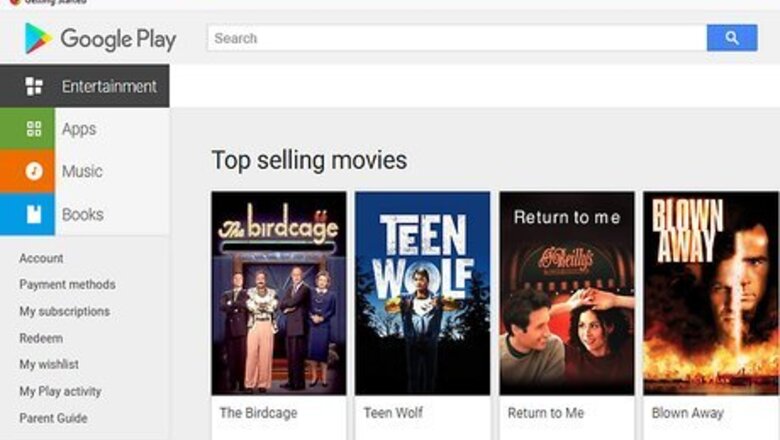
views
Using the Google Play Store
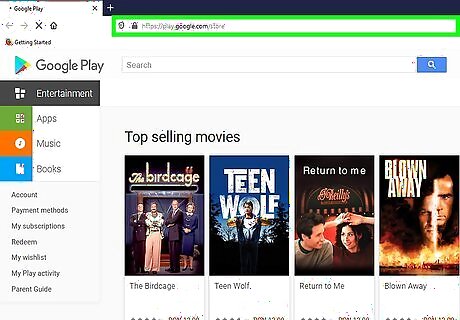
Go to https://play.google.com in your computer's web browser. You can use any web browser on your computer to access the Google Play Store. All of the apps you've installed on your Android are linked to your Google Play account, which means that if you sign in to the Play Store on your computer, you can install and update apps remotely. Although there's technically no "Update" option when using the Play Store on your computer, you can update any installed app to its latest version by clicking Install on that app's page. This has the same result as tapping Update in the Play Store on your Android.
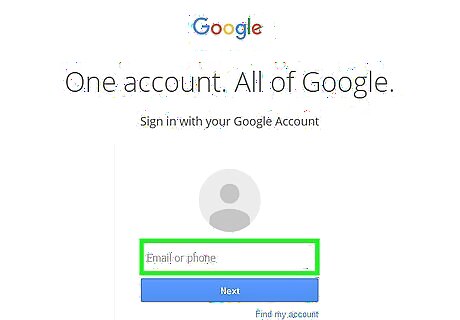
Sign in to your Google account. You must sign in using the same Google account that's associated with your Android. To sign in, click the blue Sign in button at the top-right corner, and then enter your login info as requested.
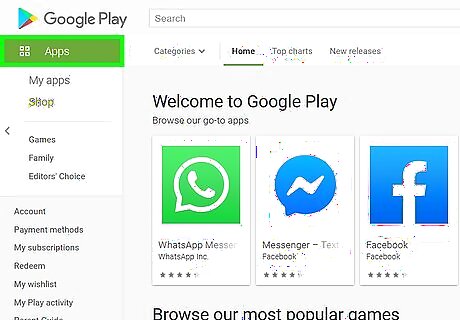
Click the green Apps tab. It's near the top-left corner of the page in the sidebar menu.
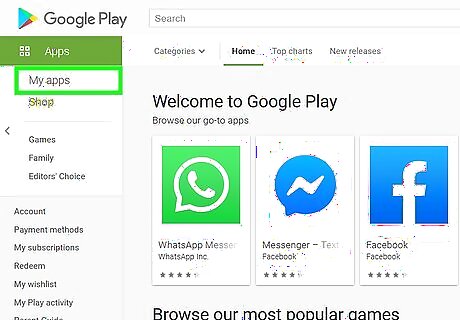
Click My apps. It's the first option in the sidebar menu on the left side of the page (under the "My apps" header). A list of all apps installed on your Android will appear.

Click the app you want to update. Any app with a green-and-white checkmark at the bottom-right corner of its tile is installed on your Android. Click an app tile to open that app's information.

Click the green Installed button. It's at the top-right corner of the app's info page. A pop-up window will appear.
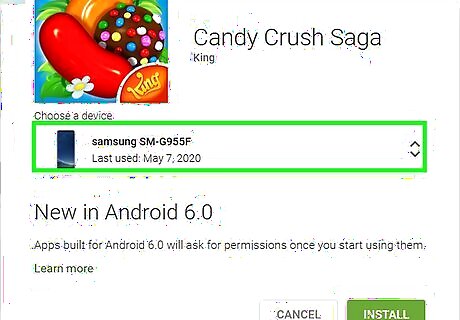
Select your Android from the "Choose a device" menu. If you already see your Android selected, just skip to the next step.
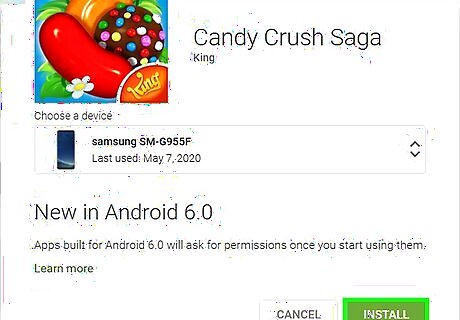
Click the green INSTALL button. It's at the bottom-right corner of the window.
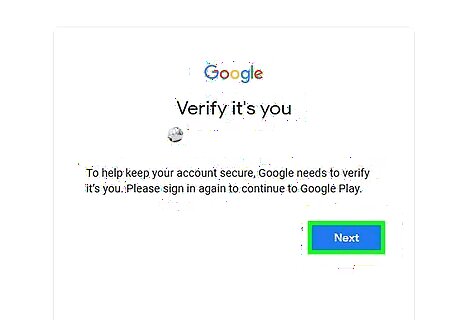
Enter your Google account password and click Next. Once your identity is confirmed, you'll see one of two messages: If the message says the app "will be installed on your device soon," it means the app needed to be updated. If your Android is online, the update should start immediately. If not, the app will be updated the next time you connect it to the internet. If your Android is set to only run updates when connected to Wi-Fi, the update won't start until it's connected to Wi-Fi. If you see a message that says "No eligible devices for app install," click the Choose a device menu—beneath your Android, you should see "Your device already has this item installed," which means you're already using the latest version of that app. No update is necessary.
Using AirDroid
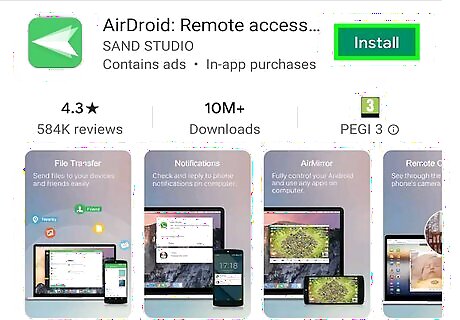
Install AirDroid on your Android. AirDroid is a free app that lets you access your Android's home screen from your computer. This means you can update Android apps through the Play Store just as you would if you were using the phone's touch screen. The app is free from the Play Store, although some features (not the one you need right now) require a premium subscription. The app has a green icon with a white paper airplane inside, and the developer is Sand Studio. You will need to connect your Android to your PC or Mac with a USB cable to use this method.
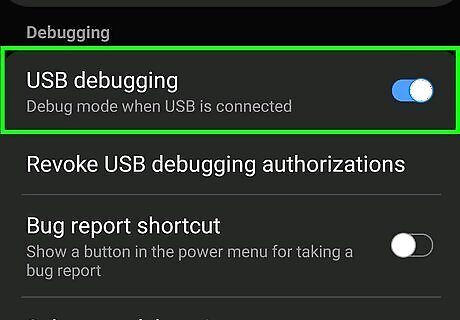
Enable USB Debugging on your Android phone or tablet. You'll only need to do this once. This allows you to connect your Android to your computer via USB: Open Settings and tap About phone or About tablet. Tap Software information. Tap Build number 7 times (quickly) until you see the message that says "Developer mode is enabled." Return to the Settings main screen and tap Developer options. If the switch is not enabled, tap it to enable it now. Slide the "USB debugging" switch to the On position. Tap About phone or About tablet.
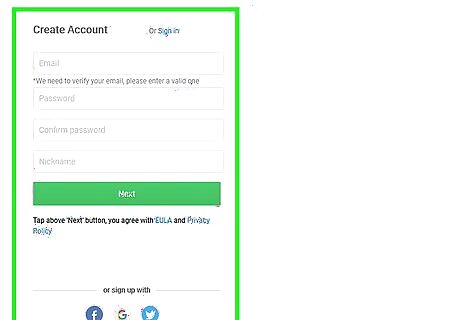
Create an AirDroid account. To do so: Go to https://www.airdroid.com/en/signup/ in a web browser. Enter your email address and create a password. Type a nickname for your account. Click Next to send a confirmation code to yourself via email. Copy the confirmation code in the email from AirDroid and paste it into the "Enter verification code here" field. Click Verify and sign up.
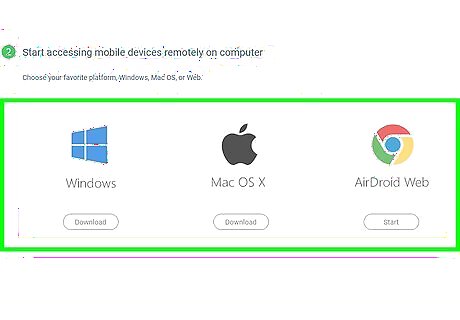
Install AirDroid for Windows or macOS. Now that you have an account, scroll down and click the Download link below your operating system to download the AirDroid installer. Once downloaded, double-click the installer to run, and then follow the on-screen instructions to complete the installation. If you're using Google Chrome as your web browser and prefer to use a web-based version of AirDroid, you can click Start under "AirDroid Web" instead to install the Chrome AirDroid extension. Once installed, you can access AirDroid on the web at https://web.airdroid.com. The remaining steps will be a little different for the web version, but not too different.
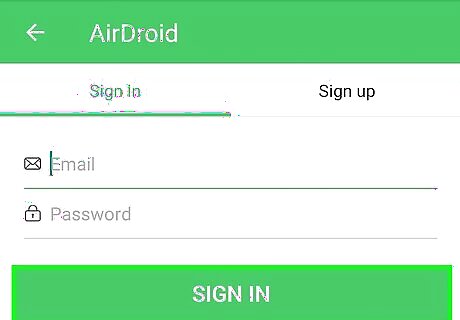
Log in to AirDroid on your Android. Downloading the app earlier added a new green-and-white paper airplane icon to your app drawer. Tap it to launch AirDroid, and then enter your login information to sign in.
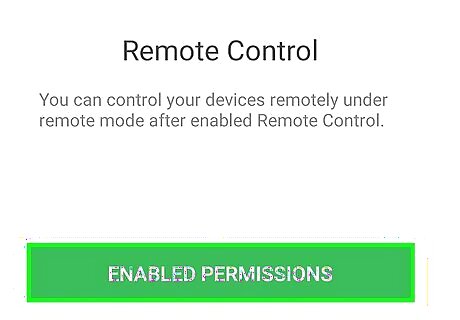
Enable Remote Control on your Android. The first time you set up AirDroid, you'll be prompted to set up Security & Remote features. Here's how to enable Remote Control: Tap OK to set up Security & Remote Features. Tap Remote Control near the bottom of the list. Tap the green Enable Permissions button at the bottom of the screen. *Tap OK on the pop-up message to close it. In the future, you can enable and disable this feature in AirDroid by tapping the Me tab and navigating to Security & Remote Features > Remote Control.

Log in to AirDroid on your PC or Mac. To do this, open the new AirDroid app in the Start menu (PC) or in the Applications folder, and then enter your login credentials. Once you're signed in, you'll see your Android listed under "My devices." If you don't see your Android in the list, make sure it's connected to the same Wi-Fi network as your computer, and that the app is open.
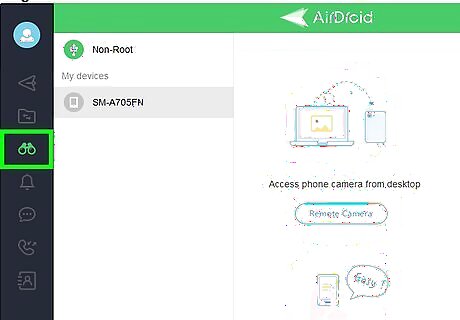
Start a Remote Control session. You'll need to do this every time you want to start a new remote control session. Here's how you'll do it: On the PC or Mac version of AirDroid, click the binoculars icon in the left column. This opens the Remote Control panel. Click Start Non-Root authority on the computer. Connect your Android to the computer with your USB charging cable. Plug the larger USB end into an available USB port on your computer. In a moment, you should see a pop-up message on your Android. Tap Ok on the Android to enter debugging mode. If prompted to select a USB configuration on your Android, select Charging only. Follow the on-screen instructions on your Android to start the remote connection. Once you approve the connection, you will see your Android's home screen in the AirDroid window on your computer. If the remote session doesn't start automatically, click the binoculars icon again, and then click Connect under your Android.
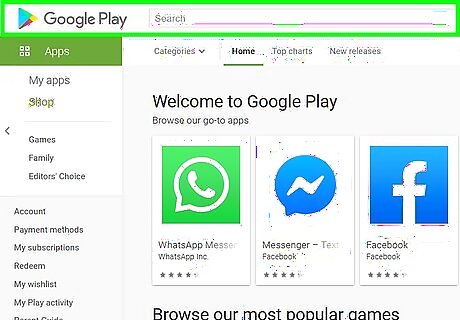
Use your computer to open the Play Store app on your Android. Using your mouse in the same way you'd tap with your finger, click the Play Store icon, which looks like a sideways multicolored triangle. It'll be in your app drawer.
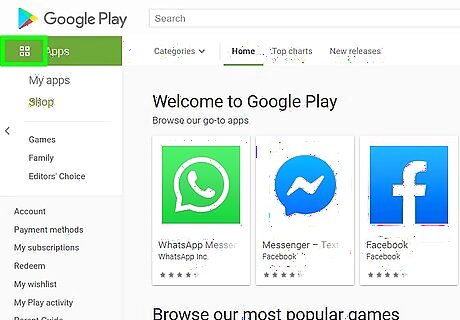
Click the menu ☰. It's at the top-left corner of the Play Store. A menu will expand.
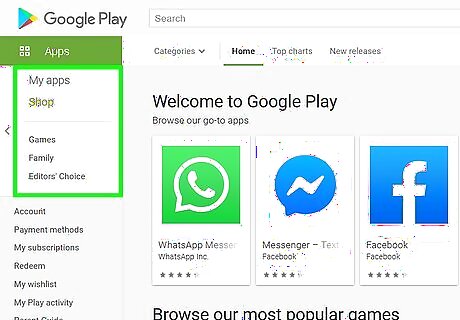
Click My apps & games on the menu. It's the first menu option. This displays a list of apps on your Android that have updates available.
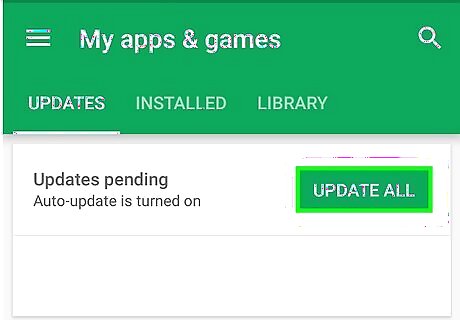
Tap Update all to update all apps at once. It's the green button near the top-right corner of the list. If you prefer, you can just tap Update next to an individual app to update it instead. When you are finished updating your apps, you can close the connection by closing the AirDroid window on your computer, and/or by closing the AirDroid app on your Android. In the future, just open AirDroid on both your Android and your computer, connect the two via USB, and click the binoculars to start a new connection.




















Comments
0 comment